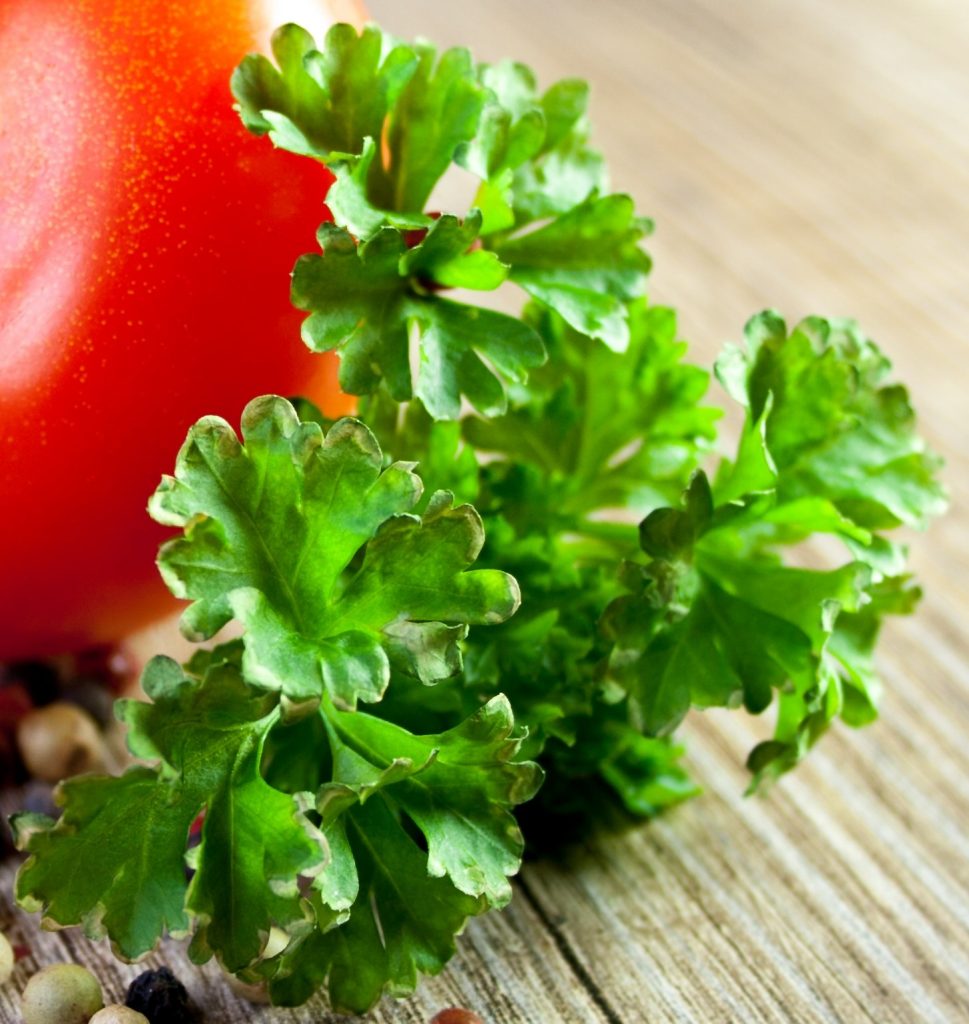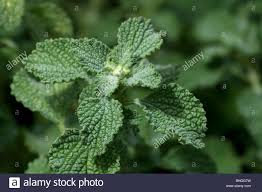
by Tammera J. Karr, PhD
Many of us grew up seeing parsley as the attractive green garnish on dinner plates. The vibrant taste and wonderful healing properties of parsley are often ignored in its popular role as a table garnish. Parsley is so much more than a pretty garnish or filler plant in the garden. Rarely as a youngster, did I see anyone actually eat this green or grow it in their gardens. Parsley was something reserved for fancy restaurant food. The unpopularity of this herb may be because of the ancient folklore associated with parsley and eastern Oregon being heavily settled by Irish, Welsh and Scottish emigrants. Add to this the herb has a reputation of being hard to grow from seed and propagate in gardens; traditionally mankind has attached vile forewarning s or stigma to foods that fell into the difficult to keep alive category.
‘Welsh parsley is a good physic’ – ‘Welsh parsley’ signified the gallows rope. In Surrey and in other southern English counties it was said, “Where parsley’s grown in the garden, there’ll be a death before the year’s out.”
While certainly not as dramatic as a death sentence, it was believed if someone cut parsley that they would be later crossed in love. in Hampshire, peasants feared giving away any parsley as it would bring ill-luck upon them. In Suffolk, it was thought sowing Parsley seed on Good Friday would ensure the herb coming up “double.” [1]
Originally, parsley came from Southwest Asia and the Mediterranean (Turkey, Algeria, Sardinia, and Lebanon). The herb has been cultivated since ancient times and was widely grown in most parts of Europe. Today, the plant is extensively used as a spice and cultivated all over the world.
The parsley leaves are best during the plant’s first year, and they can be picked at any time during the growing season. The leaves can be dried or kept frozen for later use. The root is collected in the autumn in the first year or in the spring of the second year of the plant’s life cycle. It should be used fresh, but can also be stored as other root vegetables, preferably in a cold place. [2]
Parsley contains two types of unusual components that provide unique health benefits. The first type is volatile oil components—including myristicin, limonene, eugenol, and alpha-thujene. The second type is flavonoids—including apiin, apigenin, crisoeriol, and luteolin.
Along with flavonoids (apiin), parsley contains glucosides, phthalide, furanocoumarins, carotenoids, vitamins A, B1, B2, B3, B5, C and E, and minerals such as iron, potassium, calcium, magnesium, phosphorus, selenium, sulfur, copper and manganese. Studies have shown that vitamin K is vital in bone formation, protects against osteoporosis and is very beneficial for the circulatory system and the nervous system. [3]
Five grams of parsley covers the daily requirement of vitamin A, and 25 grams of the fresh herb cover the daily requirement of vitamin C. Parsley is an excellent source of dietary fiber and calcium which makes it a good option for those who are dairy free. [4] Some studies have suggested parsley may limit the harmful effects of carcinogenic substances. This is probably due to the chlorophyll content.
Parsley increases the secretion of digestive fluids improving digestion, better-quality nutrient uptake, and reduces gas. It may also be used as a remedy for colic and digestive pain for those with IBS and Crohns.
Parsley is a effective diuretic and has been used to treat fluid retention (edema) and to speed up the elimination of harmful toxins. German doctors, who are known to use medicinal herbs to great extent, often recommend a tea made from the seeds as a treatment for high blood pressure. [5]
Beta-carotene found in parsley works in the fat-soluble areas of the body. Diets with beta-carotene-rich foods are associated with a reduced risk for development and progression of atherosclerosis, diabetes, and colon cancer. Like vitamin C, beta-carotene may also be helpful in reducing the severity of asthma, osteoarthritis, and rheumatoid arthritis. And beta-carotene is converted by the body to vitamin A, a nutrient important in maintaining eyesight and a strong immune system. [6]
A study published in the Journal of Allergy and Clinical Immunology showed parsley inhibits the secretion of histamine, a substance produced in the body that is responsible for triggering allergy symptoms. The herb may, therefore, be helpful as a herbal remedy for hay fever. [7]
So let’s give Parsley some credit for more than it’s attractive appearance on our plates – Here is to green for health.
[1] http://www.ourherbgarden.com/herb-history/parsley.html
[2] http://naturalsociety.com/parsley-health-benefits-growing-parsley-medicine/
[3] https://www.medicalnewstoday.com/articles/284490.php
[4] https://www.herbal-supplement-resource.com/parsley-benefits.html
[5] https://www.herbal-supplement-resource.com/herbs-high-blood-pressure.html
[6] http://www.whfoods.com/genpage.php?dbid=100&tname=foodspice
[7] https://www.herbal-supplement-resource.com/hay-fever-remedies.html
by Tammera J. Karr, PhD
Poor air quality increases the risk of chest and sinus infections.
I have a small herb garden in my yard; it consists of those herbs that thrive on abuse. One such herb is Horehound. Some of you may be old enough to remember horehound candy drops; others may remember a nasty syrup that you were given as children for chest colds or coughs. For me, I have a recollection of a grandfather who carried horehound drops in his pocket. Apparently, I thought they were the “cat’s meow” as a three-year-old…. Proof that little kids will believe anything you tell them.
 Horehound is a garden mint with green and white leaves and a distinctively bitter taste. It is native to Asia and Europe but is naturalized in North America. Although the herb grows in a wide range of climates, the best quality is produced in the desert heat. Its primary use has been as an expectorant and is a common ingredient in cough medicines.
Horehound is a garden mint with green and white leaves and a distinctively bitter taste. It is native to Asia and Europe but is naturalized in North America. Although the herb grows in a wide range of climates, the best quality is produced in the desert heat. Its primary use has been as an expectorant and is a common ingredient in cough medicines.
The name may suggest a breed of dog, but that is misleading. “Hore-” does mean hoary (gray or white) in Old English, but “-hound” is not canine; it is simply an old name for the herb. The generic name Marrubium is the name by which the Romans knew the herb, and vulgare means common.[1]
Horehound has been used to make lozenge candies that are believed to help heal sore throats, improve your appetite and relieve intestinal gas.[2] Horehound is also recorded as one of the “bitter herbs” eaten at Passover.
Horehound contains a variety of nutrients that are needed for the immune system to work they include; Examples include B-complex vitamins, iron, potassium, and vitamins A, C, and E.
Horehound primarily acts on your lungs. The late herbalist and naturopath, Dr. William Mitchell Jr., noted that horehound serves as a respiratory stimulant, expectorant and cough suppressant. It reduces the thickness of the mucus in your lungs and your bronchial tubes, which makes it easier to expel the mucus. According to the University of Michigan Health System, because of Horehound’s ability to loosen bronchial secretions and expel mucus, this herb may be especially useful in treating bronchitis.
This herbal remedy is prescribed by natural health care practitioners and some medical doctors for a broad range of health problems. The University of Michigan Health System states horehound may be useful for increasing your poor appetite, treating your coughs and reducing your indigestion by aiding the gallbladder in its function. Other conditions that horehound may help include sinus inflammation, hay fever symptoms, and abdominal swelling. Horehound is also known to increase immune system activity.[3]
Horehound is used to make cough medicines for people whose upper respiratory symptoms are caused by acid reflux. The marubiinic acid in the herb both stimulates the release of phlegm and stimulates the release of gastric
[1] http://www.herbcompanion.com/Herb-Profiles/HERB-To-KNOW-Horehound.aspx#ixzz20v65NGEf
[2] http://www.livestrong.com/article/368945-what-are-the-benefits-of-the-horehound-herb/#ixzz20v2MeWC7
[3] http://www.livestrong.com/article/368945-what-are-the-benefits-of-the-horehound-herb/#ixzz20v3d5Uls
Check Out Our Online Course
Let’s Begin the Journey of a Lifetime!